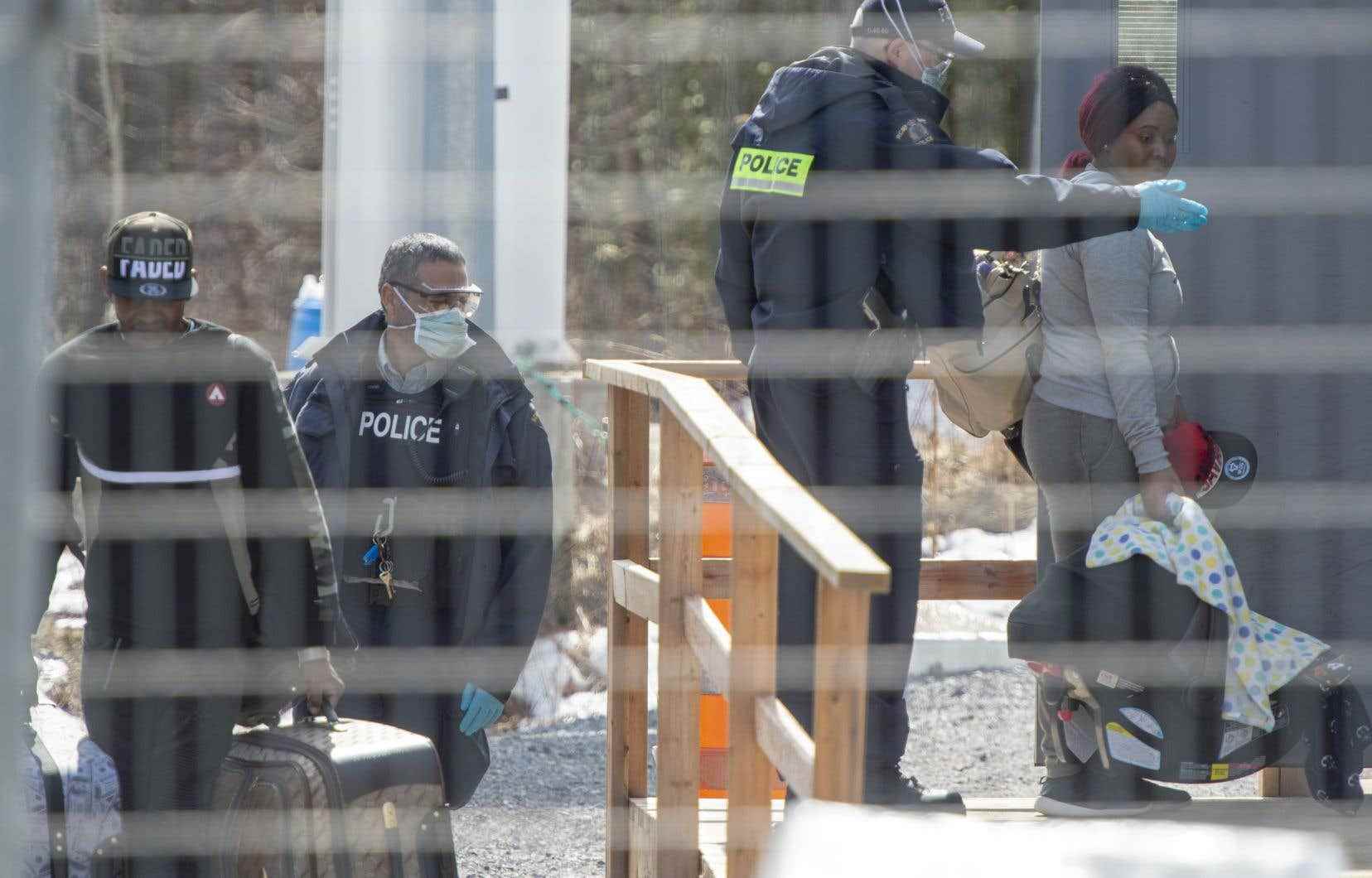Closed during the pandemic, Roxham Road became very busy again when it reopened in November 2021. Since then, more than 2,000 people a month have taken this route to Quebec to seek asylum in Canada. Explanations 101 to decipher the situation and put it into perspective.
Is the situation exceptional on Roxham Road?
During the pre-pandemic years, approximately 17,000 to 18,000 people per year passed through Roxham Road. Although the first half of 2022 is not over, 10,000 people have already passed through this path, more than half of the average annual entry. However, the current number of crossings is very similar to that observed during the summer months of 2017, when many asylum seekers, particularly of Haitian origin, entered via Roxham Road. According to Stephan Reichhold, director of the Round Table of Organizations Serving Refugees and Immigrants (TCRI), the problem is not Canadian or Quebec, it is global. “There are hundreds of thousands of refugees crossing borders everywhere. In Europe, it’s even more dramatic,” he says.
Will 35,000 people pass through Roxham by the end of 2022?
Immigration Minister Jean Boulet has estimated that 35,000 people will enter Quebec via Roxham Road by the end of 2022. For Yanniv Waknine, fourth national vice-president of the Customs and of immigration, the trend is certainly on the rise, but it remains difficult to predict anything. “It can go up or stagnate, we are in the unknown. For Louis-Philippe Jannard, doctoral student in law at UQAM and specialist in immigration, this figure is random. “There is a lot of uncertainty, because we don’t know the underlying reasons that led people to cross in large numbers,” he said. “I have the impression that we wanted to produce a crisis effect,” he adds, recalling that the elections will take place in the fall.
Does Quebec take care of all asylum seekers who pass through Roxham?
Asylum seekers who arrive by this route do not all stay in Quebec. Many go to Ontario or other Canadian provinces. For the first four months of 2022, statistical data from the Regional Program for the Reception and Integration of Asylum Seekers (PRAIDA) show that half of asylum seekers entering via Roxham Road did not register in Quebec. to receive services. These are paid for by Ottawa through annual federal transfers of approximately $700 million, to which substantial amounts have been added in recent years.
What services do asylum seekers receive in Quebec and who pays the bill?
Asylum seekers are entitled to last-resort social assistance, help finding housing and enrolling their children in school, and health insurance paid for by the federal government. Stephan Reichhold, of the TCRI, recalls that since the arrival of the government of Justin Trudeau, it is Ottawa that pays for the services offered by the PRAIDA, through its annual transfers and the aforementioned added sums.
Can Ottawa close Roxham Road as requested by the Legault government?
During the pandemic, this country road had been temporarily “closed”, meaning that RCMP officers were on permanent duty to turn anyone back to the United States. However, this did not prevent 682 people from entering Quebec irregularly between March 2020 and October 2021. However, whether they are prevented from circulating there by barbed wire or concrete blocks, asylum seekers will find other means of entering Canada, believe many observers. “It’s like thinking that closing shelters for victims of domestic violence will stop domestic violence,” illustrates Stéphanie Valois, president of the Quebec Association of Immigration Lawyers. “It is not Roxham who creates asylum seekers. It is the Safe Third Country Agreement, and it must be abolished. The four main parties in the National Assembly are also demanding that Ottawa review the Safe Third Country Agreement.
What impact does the heavy traffic at Roxham Road have on asylum seekers?
Currently, with approximately 100 people arriving per day, customs officers at the Lacolle border post are unable to process the admissibility of asylum applications. This first step, which is normally done in a few working days, according to the law, now takes a year. Asylum seekers can still stay in the territory and obtain services, but until Immigration Canada has ruled on the admissibility of an application, they do not have access to the work permit issued by the federal government. . “But the vast majority of my clients want to work and don’t want social assistance,” says Ms.and Valois. Last resort assistance is not a long-term solution. »
